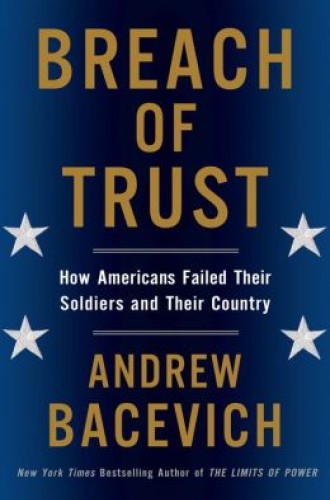Breach of Trust, by Andrew J. Bacevich
Every year, hundreds of thousands of freshly minted high school graduates enter college across the United States. On the surface, this fall’s ritual of college orientation looked very much like any other’s. Yet there is something different about this group of 18-year-olds. They represent a rare generation of American college freshmen whose country has been at war since the day they entered elementary school.
Numbed to the reality of U.S. troops fighting overseas and fixated on the issues of day-to-day life, Americans rarely pause to note that more than a decade after 9/11, our nation is still at war. Even fewer of us note how rare this period is in U.S. history. We sometimes forget that despite its immense impact on American life and the American psyche, U.S. involvement in World War II lasted under four years. Twelve years in and counting, the current war on terror has now joined the Vietnam era as one of the two longest periods of sustained combat in the nation’s history.
We are often told that the protracted nature of modern conflicts is due to the emergence of counterinsurgency warfare and nonstate actors. Andrew Bacevich, a professor of history and international relations at Boston University who served for 23 years as an officer in the U.S. Army, offers an alternate explanation. He argues that the sustained character of modern American wars has little to do with the changing nature of the enemy and everything to do with who we have become as a people.





